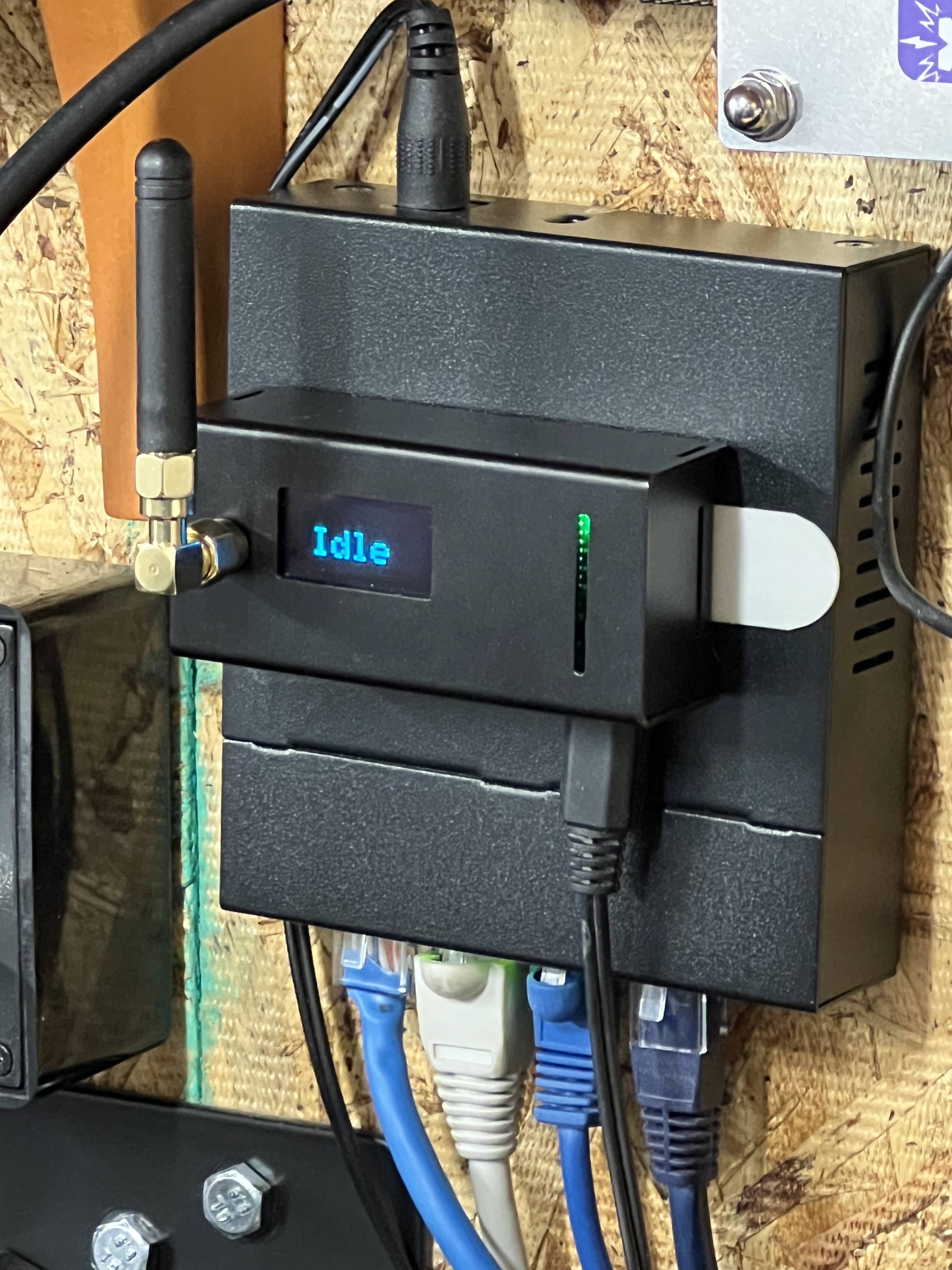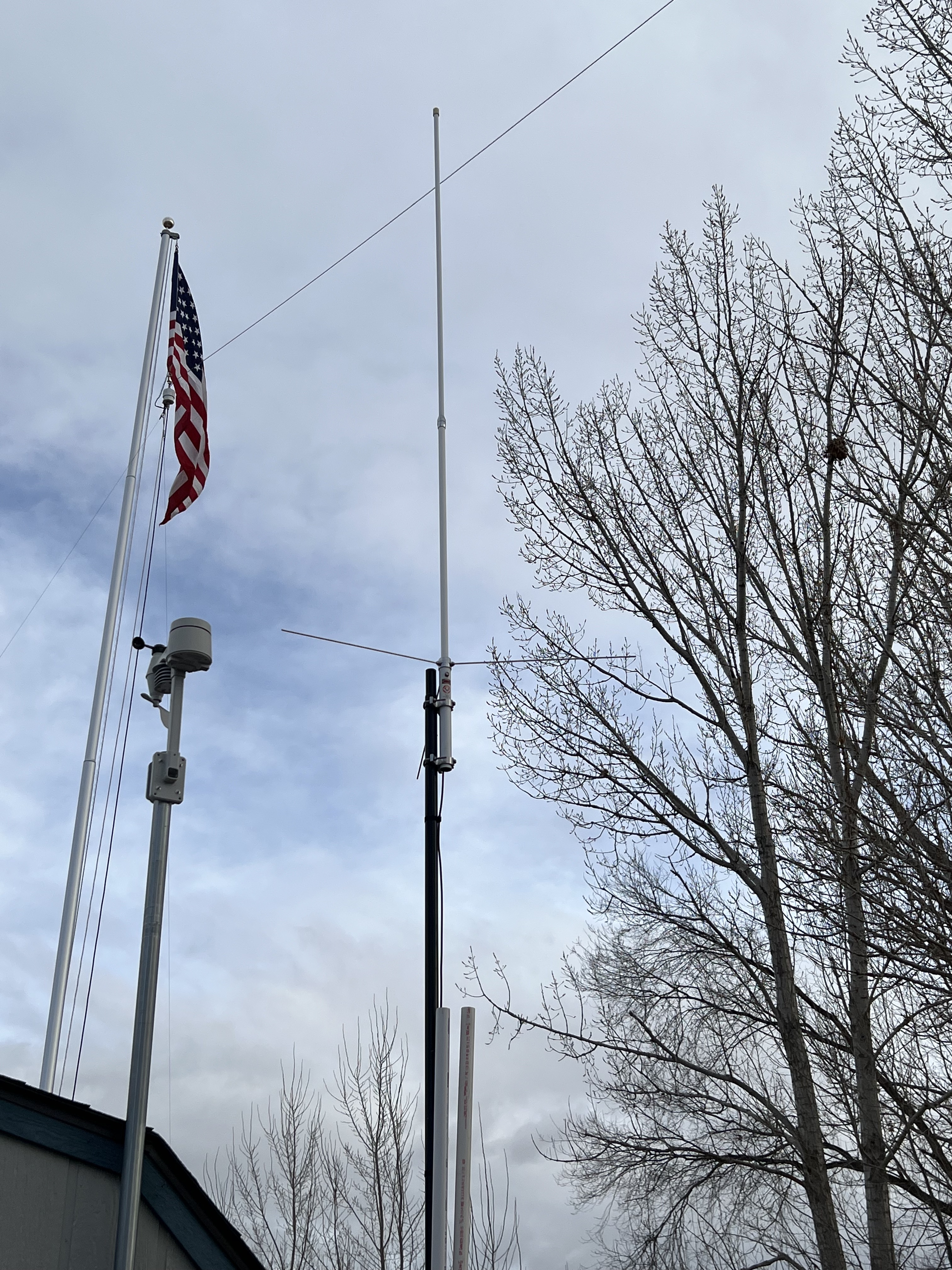ICOM
51A DMR Radio
ICOM documentation for
this radio. Don Race KW2AIR - one of my oldest
friends, gifted me this radio to get started in
Digital Mode Radio (DMR).
To get DMR working you
need a DMR capable radio (this one is D-STAR), and an
internet connected repeater or hotspot to contact via
the transmitted signal.
This page is dedicated
to the ICOM 51A Plus Radio, the Pi-Star (Pi Zero W w/
MMDVM modem) hotspot and D-STAR.
ICOM
ID-51A Plus RADIO
Cloning Software Instructions
CS-51
ID-51 Basic Instructions 1
ID-51 Basic Instructions 2
D-STAR
Handheld Radio Selection Chart
D-STAR
Handhelds Radio Spotlight
ID-51A D-STAR Brochure
ID-51A Photo
RS-MS1A
Device Requirements-Android Only Remote Control via
Bluetooth or cable
Apple App
Store RS-MS1I - compatible with ID-52, probably
not compatible with ID-51A.
RASPBERRY PI ZERO W
PI-STAR
The access point needs a computer to process the output of the modem (MMDVM) to and from the internet. The smallest and least expensive such computer is a Raspberry Pi Zero. The latest version (W) includes wi-fi connectivity and deletes the Ethernet port on previous versions.
When the components necessary to construct the Raspberry(s) are no longer in short supply, this unit is available at an MSRP of $15.00 USD. Then you need a case, power supply, and the MMDVM 'hat' (that's the term Pi uses for the GPIO connected device(s). GPIO (General Purpose Input Output) is a architecture that has been around since before computers got small. It was used extensively in electronic test equipment interconnection to automate complex tasks. In essence it is an extended address and data buss that can be shared by a large number of devices. In an access point the MMDVM is the primary GPIO client.
MMDVM
MMDVM (Multi Mode Digital Voice Modem) is a chip that connects the internet on one side to a radio (in this case internal to the 'hat') on the other side. Incoming RF signals (voice or data) are converted into outbound IP (Internet Protocol) routed data, and inbound IP is converted to RF digital voice and data outbound. The MMDVM in my access point can be configured to utilize the following DMR (Digital Mobile Radio) modes:
- D-Star - Digital Smart Technology for Amateur Radio
- YSF - Yaesu System Fusion
- P25 - Project 25
- NXDN - Next Generation Digial Narrowband (NXDN)
- YSF2DMR - Yaesu System Fusion to Digital Mobile Radio
- YSF2P25 - Yaesu System Fusion to Project 25
- DMR2YSF - Digital Mobile Radio to Yaesu System Fusion
- DMR2NXDN - Digital Mobile Radio to Next Generation Digital Narrowband
- POCSAG - Post Office Code Standardization Advisory Group
DSTAR
D-Star Users - Display's current users on all reflectors or by reflector.
D-Star Gateway - D-Star registration system. My D-Star Registration Site W7AES
D-Star Info - Reflector list and repeater downloads for ID-51A Plus radio.
Repeater Book - Find repeaters various ways including 'closest to me'.
RANGE TESTING
I installed the access point on the cover of a Netgear Gigabit Switch that is mounted on the shack wall.

In this location, the unit is pretty close to the high power HF path. Time will tell if its a problem or not.
Since the output power of the MMDDV is very low (about 0.1W) I wasn't expecting particularly long range connectivity.
My first test was to use the 'rubber ducky' antenna supplied with the hotspot and drive the ID-51A around kerchunking the hotspot.
I made it 0.15 miles
Then I connected the MMDVM to my Tram 6Db VHF/UHF antenna.
And then I tried it again.
Just in case you are interested. This is what an antenna can do for you.
My plan is to NOT connect the Tram except for testing. The reason? Its a publicly accessible access point, that has been published. It will easily service anyone in the park, although I may install a slightly better antenna just to get 100% coverage of the park. I'll keep the Tram on my high(er) powered VHF/UHF radio.
NOTES
As an Electronics Technician my only exposure to UHF
radio was the gargantuan dinosaur vacuum tube URC 9 aboard
CGC Cape Jellison. It worked for very short range
comms with aircraft to coordinate search patterns etc. but
on the high seas you just don't get to use it for much
else. Since the MMDVM has the ability to receive and
transmit in the 420-450 Mhz (UHF) range, I decided to
explore that portion of the spectrum with this access
point.
It has been a while since I have had to think about the
difference between a repeater and a hot spot, so here is a
quick recap.
Simplex comms are carried out between two radios on the
same or different transmit/receive frequencies. One
station transmits while the other receives, then they swap
roles to carry on a conversation. The receiver of
one radio must be tuned to the transmit frequency of the
opposite radio and vise versa. The conversation consists
of one party transmitting at a time, with no facility for
interruption by the other party.
Duplex comms are different from simplex in that each pair
of radios has separate transmit and receive frequencies
which are isolated from each other by sufficient bandwidth
(and often notch filters) to allow the receiver to receive
continuously while it's associated transmitter is
transmitting without creating a feed-back-loop. Both
parties can speak and hear each other at the same
time. This is akin to natural speech or telephone
systems.
There are a number of methods for radios to interact with
each other. In the strictly RF domain, direct comms
are nearly always simplex. In order to extend the
service area and enable portable low power hand held
radios to communicate effectively, repeaters have been
developed to simultaneously receive on one frequency and
re-transmit on another frequency. In this scenario
comms are simplex. The purpose of the dual frequency
is to allow instant re-transmission of the signal from a
more powerful location so that more of the hand held units
within the service area can participate.
Adding the digital domain comes in at least two
flavors. In one, an operator is remote from the
transmitter and performs control and communication via a
separate circuit, which may be a phone line, or a
different RF path through any number of devices used to
connect the operator to the radio site. In this
scenario the control and data circuit is dedicated and
often shielded for security and reliability. In a
different scenario the control and communications circuit
between the operator and the radio may be routed through
the public internet. Within the internet there exist
many protocols that guarantee connectivity and
security. For example the DNS (Domain Naming System)
routes messages around internet physical outages to the
extent possible, on a routine basis making guaranteed
connections as long as there exists a route between each
end. Another example is SSH (Secure Socket Shell -
{Shell has long been abbreviated as 'sh') a protocol used
to authenticate and encrypt all of the address and data
packets (fragments of the conversation) once the
connection has been established. Conducting an ssh
conversation is (for practical purposes) private.
Now we come to the idea of an access point (AP).
This is where the MMDVM (Multi Mode Digital Voice Modem)
comes into play. This device converts (MODEM stands
for Modulator Demodulator) voice to and from a digital
format. The MMDVM chips in use on typical Amateur
Radio access points also contain one or more radios which
they use to obtain the voice from a near by radio as
input/output on one side, and the internet on the
other. A computer (typically the smallest least
expensive computer that will do the job is chosen)
connects the MMDVM to the internet through the mechanisms
available to any modern computer, IP (Internet Protocol)
etc. The access point is by its nature a simplex
device, however the MMDVM chip can be used to control a
repeater (remember the two frequency simultaneous
transmit/receive function?) For this reason the
configuration of the MMDVM includes options for separate
input/output frequencies, however when used as an access
point there is no operational reason to configure it this
way.


